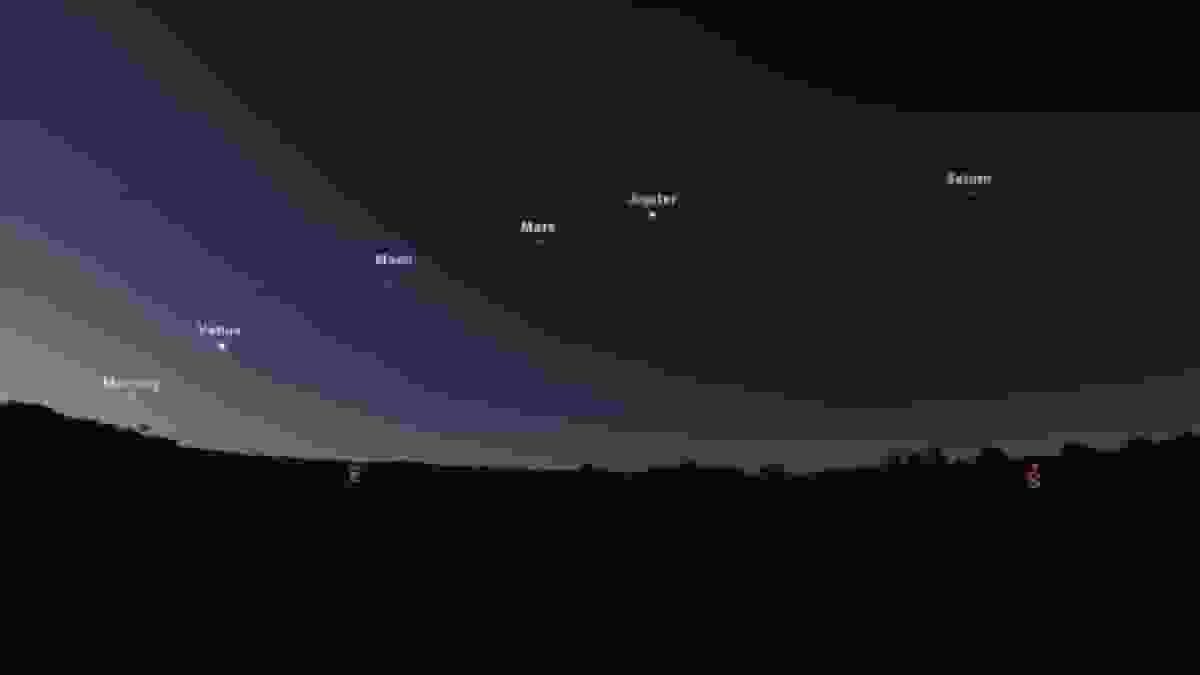
Skywatchers will be able to see a unique nighttime phenomenon as five planets in our solar system align in an arc shape next week. Jupiter, Mercury, Venus, Uranus, and Mars will align just before the end of the month on March 28.
Astronomical alignments occur when planets align on the same side of the sun at the same time. According to Starwalk, these planets will be visible after sunset within a narrow 50-degree sector of the sky.
Which Planets Will Be In Sync?
At the end of March this year, five planets are due to align and be visible from Earth. Mercury, Venus, Mars, Jupiter, and Uranus are among them, in addition to the moon! This formation is particularly unusual since it includes Uranus, the seventh planet from the Sun and one of the most difficult to see from Earth.
According to Vahé Peroomian, an astronomy and physics professor at the University of Southern California, planets appear together in the same section of the sky during their cycles around the sun. The time it takes each planet to orbit determines the rarity of alignments (such as “large” and “full” alignments).
Read more: Elon Musk’s SpaceX intends to remove dead zones around the planet
Binoculars Are Required To See The Planets

While the March 2023 five-planet alignment is projected to be seen from Earth in its entirety, skywatchers will face significant challenges.
According to Star Walk Space, the alignment of Mercury, Venus, Mars, Jupiter, Uranus, and the moon will occur within a narrow 50-degree sector of the night sky. The planetary phenomena are likely to take the form of an arc.
Mercury, Venus, Earth, Mars, Jupiter, Saturn, Uranus, and Neptune are the planets in the solar system, in order of their distance from the sun. Mercury, Venus, Mars, Jupiter, and Saturn are the “naked eye planets,” according to NASA, and are simpler to view than others.
The next planetary alignment is projected to occur on June 17, 2023. Mercury, Uranus, Jupiter, Neptune, and Saturn are among the planet
Read more: Los Angeles school employees go on strike for three days; Here’s what they want!

